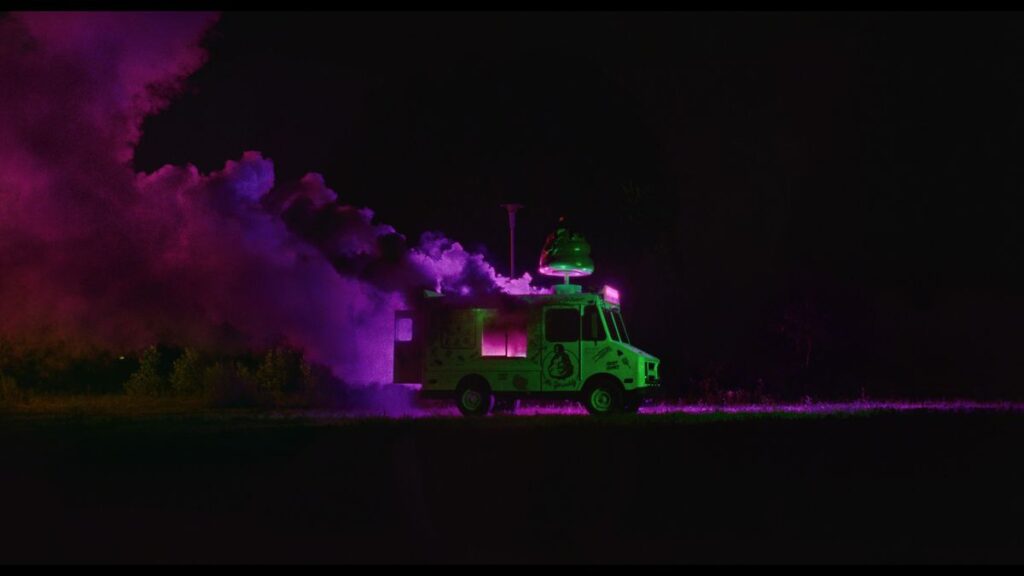Queer cinema has always been in a state of continual evolution, but the evolution of trans depiction has come slower, even during agreed-upon golden eras of queer cinema. But in 2024, we are in the midst of a potentially new movement in which three trans-authored films are reshaping the possibilities of what a trans film looks like, and how transness can be expressed in cinema.
In the 21st century, Hollywood saw the potential money in telling more “authentic” mainstream queer stories due to the advent of the New Queer Cinema of the 1990s. This movement saw radical directors like Todd Haynes, Marlon Riggs, Gus Van Sant, Cheryl Dunye, and Gregg Araki reshape the concept of how queer cinema could function, and they made a name for themselves alongside the booming popularity of the Sundance Film Festival.
At the conclusion of the decade, Hilary Swank took home an Oscar for playing Brandon Teena in Boys Don’t Cry in a moment of misguided cross-gender casting. Boys Don’t Cry was considered an instant classic at the time, and its prominence as an image of the New Queer Cinema meant its Academy Award victory was a pivotal moment for queer cinema and trans depiction alike. While this film was not perceived to be conformist at the time of its release, it has since become a model of upholding the transgressive, negative concepts of trans film images of the past, obfuscating the reality of the trans masculine body, and consigning stories of transness to familiar modes of biological underpinning: mirrors, outings, reveals, and tragedy.
For queer cinema to be viable and artistically revolutionary, it must upend the status quo of form and depiction. In the case of transness, this means a reinvention of how trans films are conceived at a visual level. Many of the trans-authored films of 2024 are promising an exciting new way forward for the concept of trans cinema, which refutes those trends of the past or renegotiates their status in a modern context. This burgeoning period feels like the trans equivalent of the reshaping of queer cinema that took place in the ’90s.
Image: A24
The modern trans mise-en-scène is directly inspired by the circumstances of the past, but the major difference between these films and something like The Matrix is these filmmakers are not forced to smuggle their ideas into the film through secretive metaphor. Jane Schoenbrun’s I Saw the TV Glow is an ambient nightmare of hissing, flashing, crackling liminal analog spaces reminiscent of David Lynch, conveying trans experiences through visual language rather than direct representation.
The directness of Schoenbrun’s usage of thematic and personal metaphors through the guise of horror is a classic storytelling device, but the way these ideas are communicated is startling, singular, and new territory for a mainstream horror picture. Their mise-en-scène embodies the specific experience of gender dysphoria and bodily disassociation through the character of Owen (Justice Smith) over a period of decades. Schoenbrun keys into beautiful liminal images and uses the in-between spaces of static on television sets, or a close-up of saliva fizzing through a bushel of cotton candy, to evince the indecipherable physical state of knowing something is amiss but being unable to find the words to describe what’s wrong. Through this idea, they illuminate a nature of transness as a true visualized bodily experience.

Image: A24
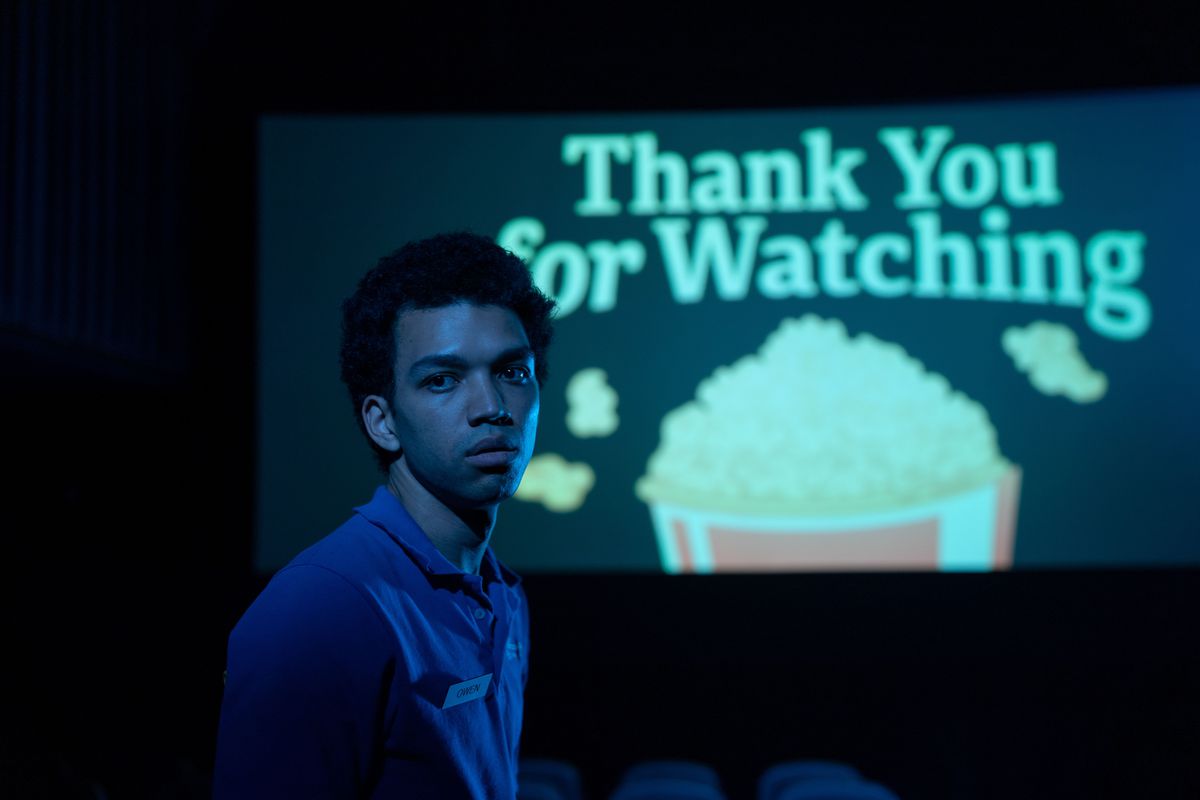
Image: A24
I Saw the TV Glow chronicles the relationship between Owen and Maddy (Brigette Lundy-Paine) as they bond over a horror-tinged television series called The Pink Opaque in the mid-to-late ’90s. Things become strange when they are no longer sure if the characters they are watching are fictional, or versions of themselves. The Pink Opaque is deliberately crafted to look like ’90s TV shows such as Buffy the Vampire Slayer and Are You Afraid of the Dark? and follows heroines Isabel (Helena Howard) and Tara (Lindsey Jordan) as they try to defeat the “big bad” Mr. Melancholy.
Schoenbrun taps into the complex nature of trans viewership and nostalgia, which is typically built upon images of fantasy as placeholders until the trans person in question can fully embody their own identity. The film wonders if this type of idealized pursuit can ever truly be a healthy relationship, which acts as an enticing metaphor that questions the value of the queer gaze and the desire to have our stories reflected on screen — and whether or not that want is just another form of prolonged closeting. TV Glow subtly interrogates how trans viewers watch things — how fantasy can be formed, and how it can curdle under the tragic weight of time. When you’ve grown up without images of yourself, you’re liable to find yourself in unexpected places. Schoenbrun, importantly, never opts for classic signifiers of transness on screen (such as cracked mirrors), but indulges in what they find beautiful and where they found their voice, such as analog horror, void spaces, and modern gothic interpretations.
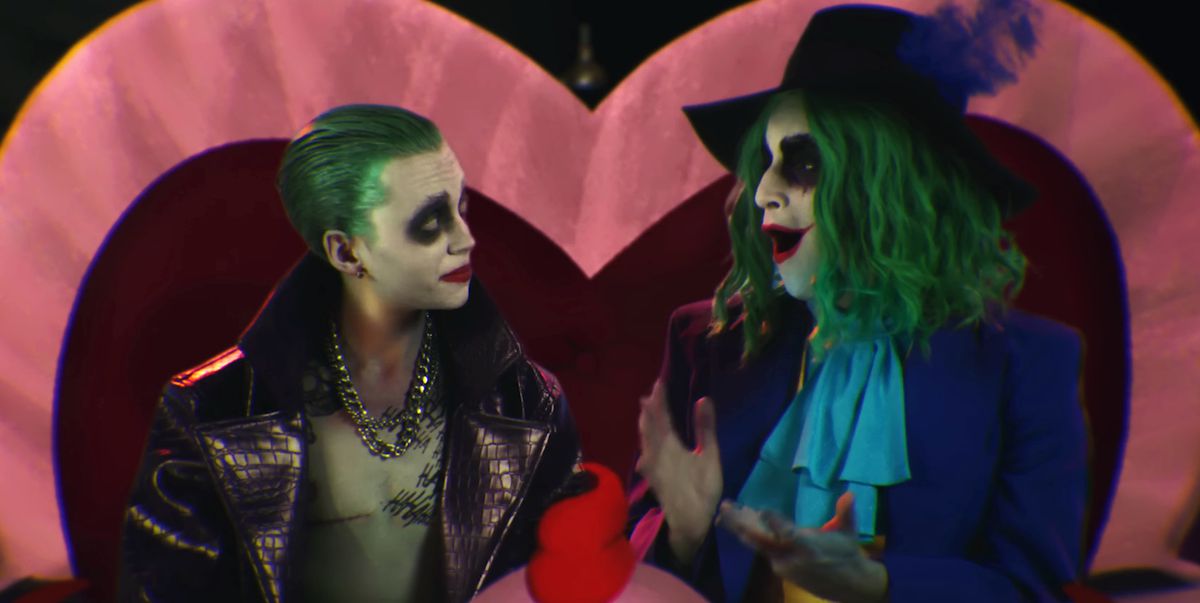
Image: Altered Innocence
In The People’s Joker, director, star, and co-writer Vera Drew found her voice through a trans coming-of-age tale encased in the phenomenon of the superhero picture. Her film is a trans memoir that also functions as a satire. It directly addresses images of fantasy in relation to the trans viewing experience, and begins with protagonist Vera watching Joel Schumacher’s Batman Forever and becoming intoxicated with the image of Nicole Kidman as Dr. Chase Meridian.
Vera wishes she could look like her someday, which makes her ’90s pre-adolescent mind wonder if there’s something wrong with her. She asks her mom if she was born in the wrong body, and is then whisked away into a montage of psychiatrists unable to fix her problems. She is prescribed “Smylex” — a drug that stretches the user’s face into an artificial grin, like Joker’s laughing gas. Years later, in this fascist, dystopian Gotham City, Vera, now an adult, performs at an illegal comedy club as “Joker the Harlequin.’’ In her avant-garde act, she intentionally bombs with material about her mother and being a trans woman before using Smylex as a crescendo, sending her into a laughing fit.
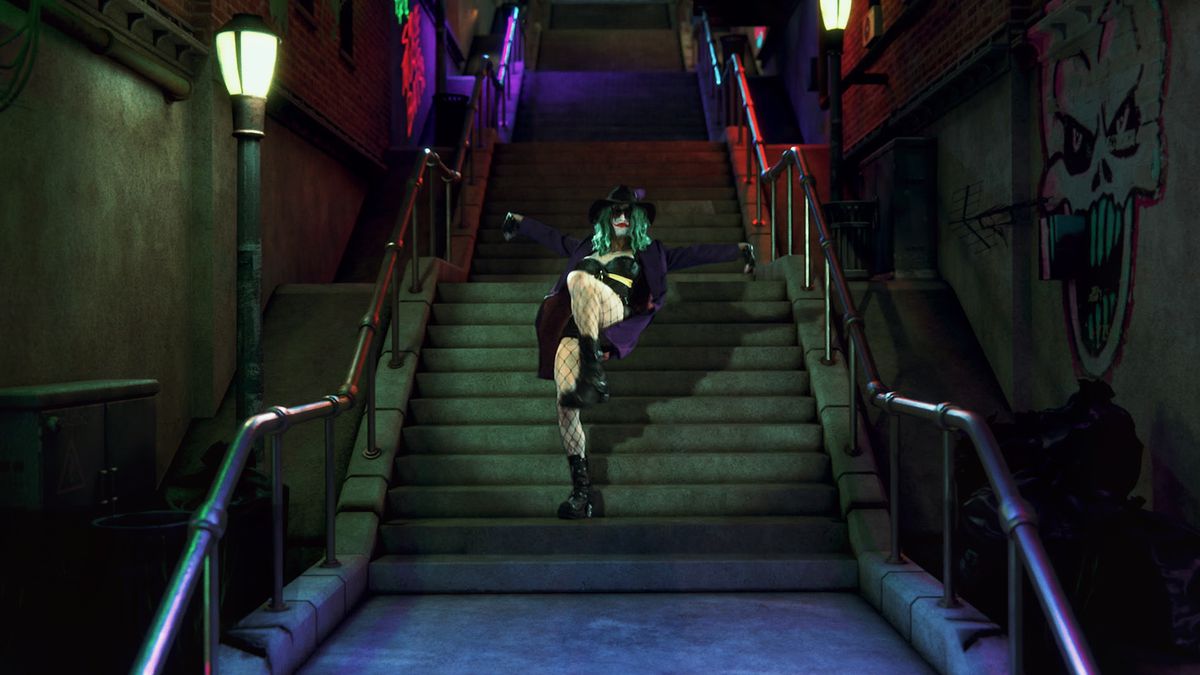
Image: Altered Innocence
Vera initially conceived of The People’s Joker as a found footage exercise, which would have used existing footage from other sources to create a new Joker film. That impulse of remixing is still felt in what The People’s Joker eventually became, but now those images have been repurposed to illuminate Vera’s own lived experience as a trans comedian through the absurdist imagery of superhero IP.
With its bursting, tacky green screens and vibrant, animated sequences built on brash, contrasting color elements, its primary visual influence is the queer-coded Schumacher Batman films. The People’s Joker tells viewers exactly what it will be with the desire to evoke the glamour of Kidman in Batman Forever, but the experience of being trans never results in the fantasy ending of what a body will become through hormone therapy and socialized transition.
There is beauty in seeing those fragments of fantasy filter through regardless, and how the trans body is its own impossibly restless, ever-changing monument to desire and fulfillment. The fantasy is only the start, and it’s later you discover who you’ll eventually become. The People’s Joker is a monument to that very idea, because it is at once all the elements of Joker (2019), Kidman’s Chase Meridian, Harley Quinn, and Selina Kyle’s transformative moment in Batman Returns all rolled into one being. Vera’s Joker falls into a vat of estradiol at one point, and the concept of the Batman film falls with her, forcing a transition upon its frame, giving it a new trans feminine body.
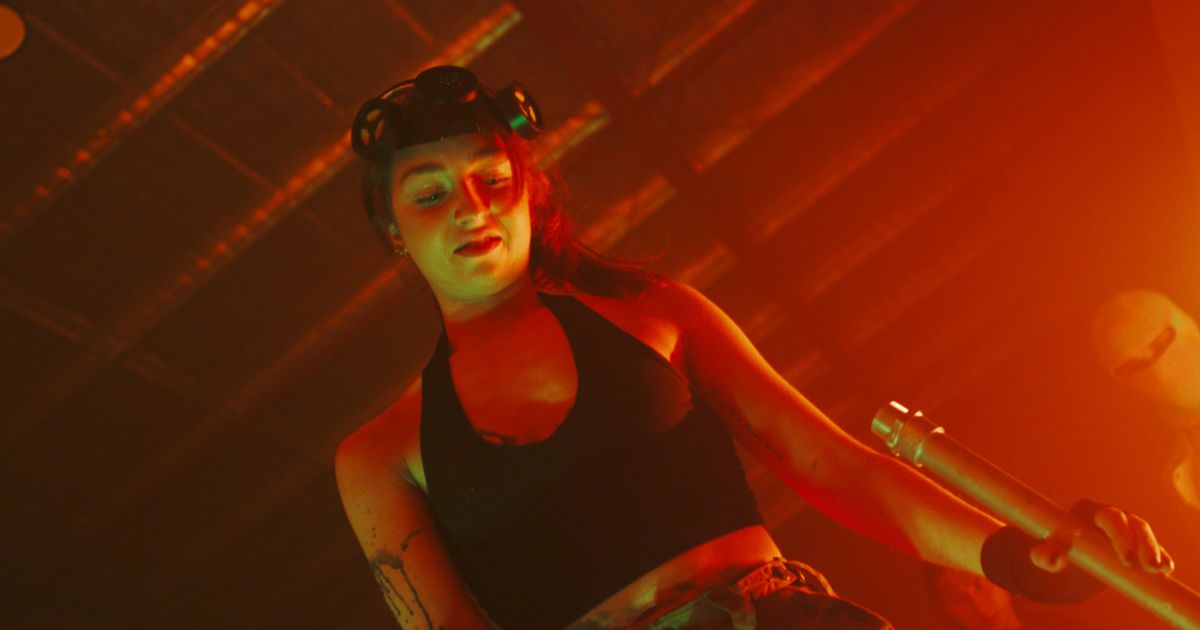
Image: Dark Star Pictures
Film history undergoes a similar trans-feminization in Alice Maio Mackay’s self-aware T-Blockers. The movie begins with an Elvira-like drag midnight movie hostess talking about the virtues of shot-on-video horror films made by trans people in the 1990s that didn’t actually exist, but were fabricated for the sake of this narrative. One of the defining factors of these three trans-authored films is the impulse to fill in the blanks of what was missing from trans film history. It is resulting in works that are self-reflexive, and prone to basking in camp alongside topics and scenes that are deadly serious. Fellow trans critic Juan Barquin astutely described the Australian trans wunderkind director Mackay as “the self aware gen z ed wood we deserve.”
Ed Wood has a broader reputation as a notoriously awful filmmaker, but in truth, he was groundbreaking, and one of the first architects of how trans cinema would operate going forward, and his films also lived in that space of camp and serious personal issues. His riotous Glen or Glenda (1953) is a multifaceted combination of medical drama, documentary, and horror film, and whose structural influences are felt across the generations of trans film image-making, ranging from Doris Wishman’s Let Me Die a Woman (1977) up through the recent Orlando, My Political Biography (2023). Mackay lives with the spirit of Ed Wood, because she is making pictures with her friends about whatever she wants with meager budgets, and with the ingenuity to argue for broader political acceptance of a minority class while also indulging in the direct pleasures of genre cinema.

Image: Dark Star Pictures
Mackay’s T-Blockers begins, like all of her films, with a title card that reads “A Transgender Film By,” an ode to Gregg Araki’s tendency to announce the latent queerness of his projects with a title card championing their queerness. T-Blockers is a film about art imitating life imitating art in the vein of Cheryl Dunye’s New Queer Cinema classic The Watermelon Woman (1996), and follows a young trans filmmaker named Sophie (Lauren Last) as she tries to make it in the film industry and learn more about a trans film from the past that doesn’t actually exist.
One evening, she watches a late-night internet streaming picture show that showcases an unknown, rediscovered short film from a trans filmmaker from the ’90s. The film-within-the-film was shot on video and chronicles a trans lead in the process of killing a transphobic man who was leaking parasites out of his mouth. Sophie is shocked by the short film due to its mere existence, but also because she and her friends encountered a man infested with those same parasites outside of their local gay bar not too long ago. The parasite takes the image of bodily disintegration and dysphoria prevalent in body horror films from David Cronenberg, reinterpreting it through the lens of transphobia as an infection that spreads among a population.
It’s a film communicating directly to the moment at hand, where transphobia has spread like wildfire among legislative bodies as various conservative governments across the globe have latched onto it as an agreeable fear-mongering tactic. Diegetic radio broadcasts are heard throughout the film discussing this very topic, and the climax hinges on Sophie and her friends contending with a flock of protesters looking for a return to the values of the past. This is where the parasite breeds.

Image: Dark Star Pictures
T-Blockers is also a salient picture that prioritizes the importance of available images to trans viewers, so that we may learn from our history and see ourselves in film. Sophie learns how to fight the parasites through her discovery of this short film from the ’90s, and through this link to the past, she also finally believes in the possibility of making films as a trans person.
The trans film archive is one that is largely closed to trans viewers, because there is not a mainstream precedent for our inclusion in motion pictures, and the independent and forgotten films of disreputable genres have long been neglected in cinephile spaces. Due to the nature of the hidden archive, trans filmmakers are taking an oblong route in telling their own stories by finding beauty in other images, such as horror shows from the ’90s, or comic book movies, or Gregg Araki films, and introducing their own spin on preexisting modes of expression. It is a dynamic way of moving transness on screen forward and transcending limiting concepts of good or bad representation in favor of an expressionistic take on gender identity.
With I Saw the TV Glow, The People’s Joker, and T-Blockers, we are potentially witnessing the beginning of a new era of trans image-making where transness is more clearly defining itself without the imposition of cisgender assumptions about what it means to be a trans person. With these three films, and other recent pictures made by trans filmmakers such as Angelo Madsen Minax, Isabel Sandoval, Tourmaline, Jessica Rovinelli, and Louise Weard, we are seeing the formulation of a new trans cinema movement in North America that has hopefully only just begun.

